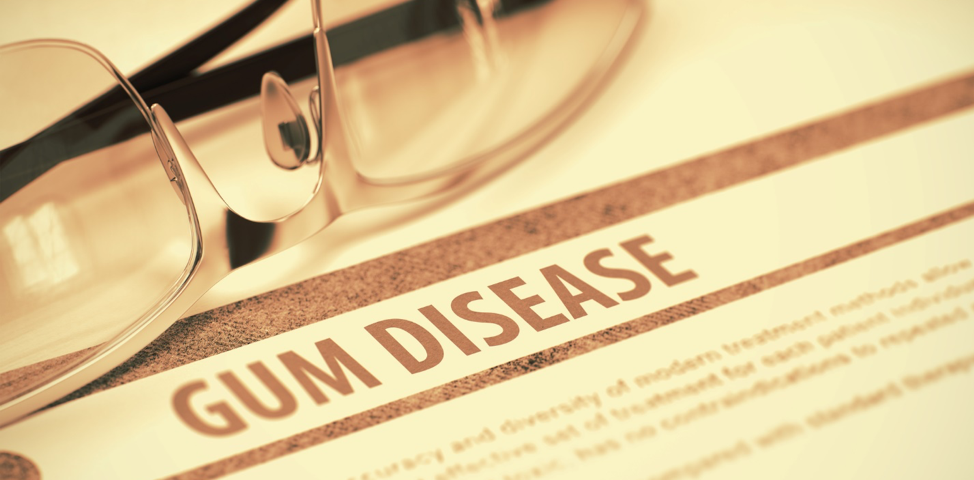
5 Benefits of Dental Implants
November 22, 2019
Why is Invisalign® so popular?
December 13, 2019Periodontal disease, also called gum disease, is an infection of the gums. According to the American Academy of Periodontology, 38 percent of women and 56 percent of men over the age of 30 will develop gum disease in their lifetime. Periodontal disease is also the leading cause of tooth loss among adults in this country. This infection does more than affect oral health, it can impact your overall health as well. Periodontal disease has been linked to heart disease, infertility, cancer, and premature birth.
Continue reading to learn more about the stages, symptoms, treatment, and prevention of periodontal disease.
Stages and Symptoms of Gum Disease
In the earliest stage of gum disease, called gingivitis, you may not experience symptoms. For most patients, though, common symptoms during this stage are red, swollen, and bleeding gums. Most people notice these symptoms when they brush their teeth.
The next stage of gum disease is called periodontitis. If your gingivitis symptoms go untreated, excessive bad breath and receding gums will join with your already existing symptoms.
Advanced periodontitis is the last stage of gum disease. At this stage, the teeth become loose and need to be removed.
During gingivitis and periodontitis, your dentist can treat
and reverse the symptoms. Unfortunately, if gum disease is left untreated,
tooth extraction may be needed to restore oral health. be the only cure.
Treatments for Gum Disease
Treatment for periodontal disease is dependent on the disease’s progression.
Before deciding on a treatment measure, your dentist or dental hygienist will examine your gums for any inflammation. He or she will also measure the depth of pockets around your teeth. If advanced periodontitis is suspected, he or she will take an x-ray to check for gum loss and other dental problems.
Most dentists want to treat gum disease as conservatively as possible. For gingivitis, a process called scaling and root planing is recommended. This nonsurgical therapy involves using an anesthetic to numb the infected area, removing built-up tartar, and smoothing any rough areas to allow the gums to reattach to the roots. In addition to this treatment, your dentist may recommend adding an antiseptic mouthwash to your daily oral hygiene routine.
For periodontitis and advanced periodontitis, other techniques are necessary. These treatment options may include:
- Gum graft surgery
- Laser pocket decontamination
- Laser gum surgery
- Bone grafting
- Guided tissue regeneration
In some cases, your gum disease may be too advanced for a general dentist. If so, he or she will recommend you to a periodontal specialist.
How to Prevent Gum Disease
Preventing gum disease is usually as simple as maintaining a good oral hygiene routine. This includes:
- Brushing properly
- Flossing regularly
- Rinsing with mouthwash
- Attending regular dental cleanings
However, some people are more prone to gum disease and should consider taking greater measures to prevent gum disease from developing. Those who are at a higher risk for developing gum disease include:
- Men and women over the age of 65
- Tobacco users
- Women undergoing hormonal changes
- People on medications such as oral contraceptives, anti-depressants, and heart medications
- Teeth grinders
These people should visit the dentist more regularly, brush their teeth more often, and maintain a healthy diet to lower their risk of gum disease.
Visit Your Grant Park Dentist Today
If you are experiencing any symptoms of gum disease, it’s imperative that you schedule an appointment with your dentist immediately.
For professional, gentle care, visit Dr. Abbey J. Lee today. Contact our friendly staff at 404-328-7177 to schedule your initial consultation.


